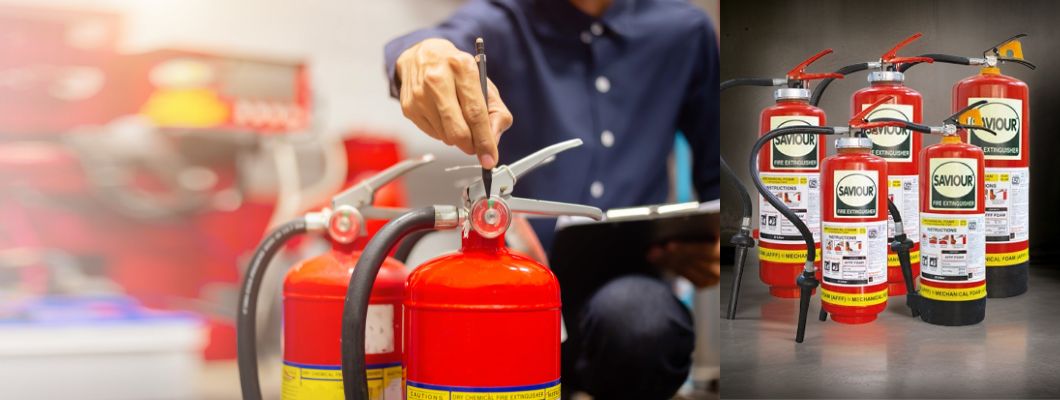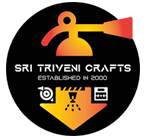
Fire and Safety Equipment: A Comprehensive Guide for Safer Spaces
In today’s world, where safety is paramount, fire and safety equipment has become an essential part of every residential, commercial and industrial setup. Whether you're safeguarding a multi-story office complex or a small warehouse, choosing the right fire safety equipment supplier can make all the difference between disaster and protection.
In this detailed guide, we’ll walk you through everything you need to know about fire and safety equipment—why it's important, what you need and how Sri Triveni Crafts stands out as a leading name in this life-saving industry.
Why Fire and Safety Equipment Is Non-Negotiable?
When it comes to fire hazards, there's no room for compromise. Fires can ignite unexpectedly and spread rapidly, causing property damage, injury or worse—loss of life. Installing fire and safety equipment isn't just a regulatory requirement—it's a moral and financial responsibility.
Having the right tools in place ensures you are prepared for any emergencies and more importantly, can take immediate action to minimize damage and save lives.
What Constitutes Fire and Safety Equipment?
Fire and safety equipment includes a wide range of tools and systems specifically designed to detect, suppress or alert people about fire-related dangers. Here’s a rundown of the essentials:
1. Fire Extinguishers
These are your first line of defense in small fire incidents. They come in various types based on the fire class—water, foam, CO2, dry chemical powder and wet chemical extinguishers.
2. Fire Alarms and Detectors
Early warning systems like smoke detectors and heat sensors can provide crucial seconds that allow occupants to evacuate and authorities to intervene.
3. Fire Suppression Systems
Installed in areas with sensitive electronics or high-value equipment, these systems use gas, foam or mist to put out fires without causing secondary damage.
4. Fire Hoses and Hydrants
Often used by fire brigades, these provide high-pressure water to tackle larger fires.
5. Emergency Exit Signage and Lighting
Helps guide occupants safely out of buildings during power failures or heavy smoke conditions.
6. Personal Protective Equipment (PPE)
Fire-resistant suits, gloves, boots and helmets ensure the safety of those responding to fire incidents.
Understanding Fire Classes and the Right Equipment
Different types of fires require different extinguishing agents. Here's a quick guide:
-
Class A: Fires involving solid materials like wood and paper – use water or foam extinguishers.
-
Class B: Flammable liquids – use foam, CO2 or dry powder.
-
Class C: Gaseous fires – use dry powder.
-
Class D: Metal fires – special dry powder only.
-
Class F: Kitchen fires involving oils – wet chemical extinguishers.
Choosing the right fire and safety equipment means understanding these classes and selecting solutions accordingly.
Choosing a Reliable Fire Safety Equipment Supplier
Not all suppliers are created equal. A trustworthy fire safety equipment supplier offers not only products but also expertise, compliance and ongoing support.
Here’s what to look for in a reliable partner:
-
Certified and Tested Products
-
Customized Solutions Based on Industry
-
After-Sales Service and Maintenance
-
Expert Installation and Training
-
Compliance with Local and National Safety Standards
Fire Safety Equipment Maintenance – Don't Neglect It
Purchasing high-quality fire and safety equipment is only half the job. Regular inspections, maintenance and training ensure your systems are ready when needed.
Some maintenance best practices:
-
Monthly checks on fire extinguishers and alarms
-
Annual professional inspections
-
Recharging and refilling used extinguishers
-
Battery checks for smoke detectors
-
Routine fire drills and staff training
Industry Applications: Where Fire Safety Matters Most
Every industry has unique fire risks. Here’s how we tailor our offerings:
-
Manufacturing Units: High-powered suppression systems for machine-heavy environments.
-
Hospitality: Quick-response extinguishers and kitchen-specific solutions.
-
IT & Data Centers: Clean agent systems that protect sensitive electronics.
-
Warehouses: Large-scale alarm systems and hydrants.
Future of Fire Safety – Smart Systems
As technology evolves, so does fire safety. Smart fire detection systems with IoT integration allow real-time monitoring and remote access. AI-enabled alarms can differentiate between actual fires and false alarms, improving efficiency and reducing panic.
Sri Triveni Crafts is at the forefront of this technological shift, offering cutting-edge solutions for the modern world.
Conclusion: Safety Begins With Preparation
No one ever plans for a fire—but with the right fire and safety equipment, you’ll be ready to act when it counts. Partnering with a trusted fire safety equipment supplier like Sri Triveni Crafts ensures your property, people and peace of mind are protected.
Whether you're setting up a new building or upgrading an existing safety system, make the smart choice—prioritize fire safety today.
For more details or to request a consultation, visit us at www.sritrivenicrafts.com.
Frequently Asked Questions (FAQs)
Q: How often should I service fire extinguishers?
A: Once a year or immediately after use, even if partially discharged.
Q: Are smoke detectors necessary in homes?
A: Absolutely. They’re a critical early-warning system that can save lives.
Q: Do you provide installation support?
A: Yes, Sri Triveni Crafts offers full installation, inspection and maintenance services.

Leave a Comment